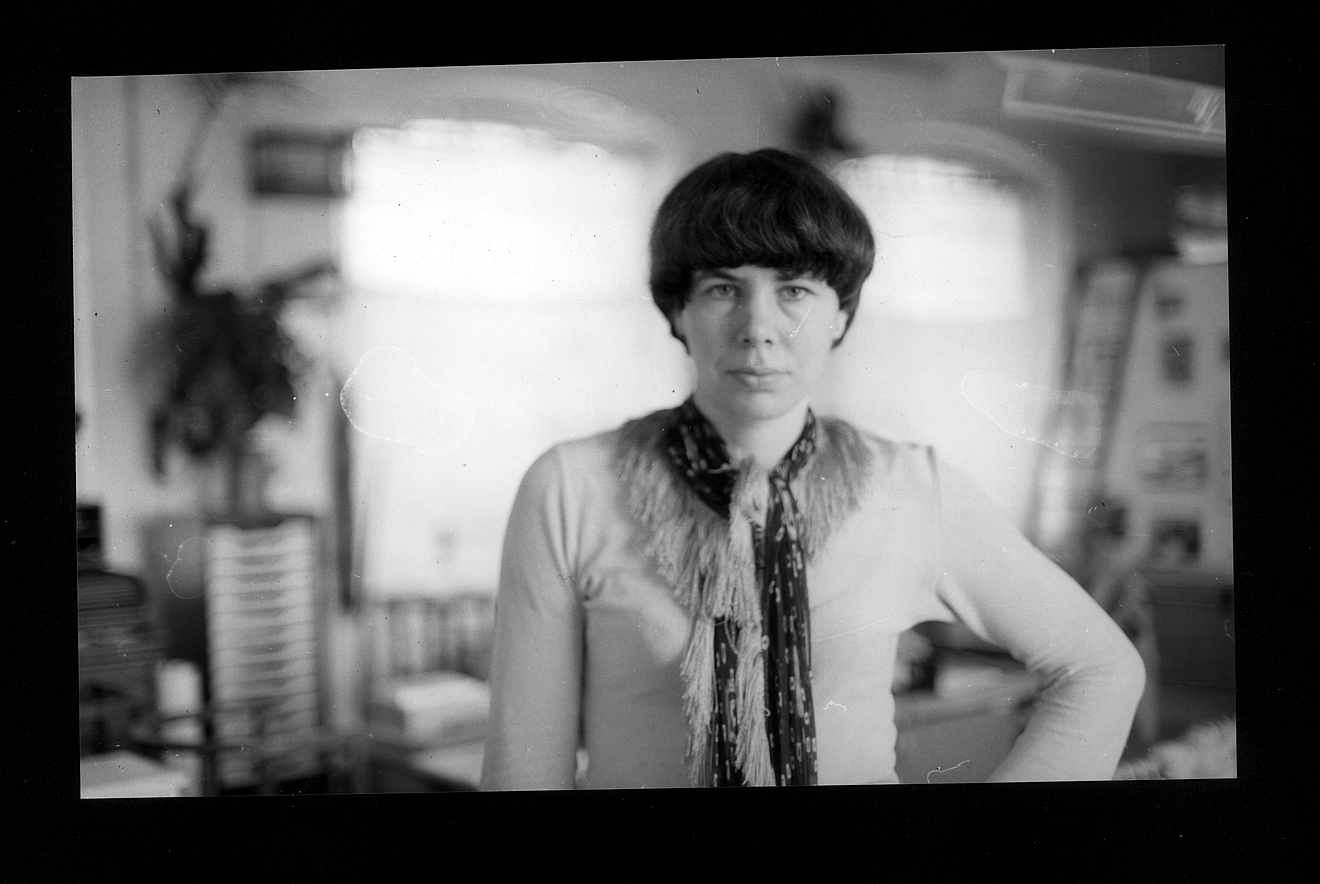
Leihgabe der Ernst von Siemens Kunststiftung
Ute Klophaus
Als Fotografin begleitete Ute Klophaus zahlreiche Kunstaktionen und Künstler:innen seit den 1960er Jahren, so beispielsweise das 24-Stunden-Happening, das 1965 in der Wuppertaler Galerie Parnass unter anderem mit Nam June Paik, Wolf Vostell, Charlotte Moorman und Bazon Brock stattfand. Klophaus wurde 1940 in Wuppertal geboren und besuchte nach einer fotografischen Lehre von 1961 bis 1962 die Staatliche Höhere Fachschule für Fotografie in Köln. 1962 erhielt sie den Deutschen Jugendfotopreis. Als selbstständige Fotografin und Bildjournalistin erlangte sie vor allem für ihre fotografische Dokumentation von einer Vielzahl der Aktionen und Lecture Performances von Joseph Beuys Bekanntheit. Ihre Arbeiten sind dabei nicht rein dokumentarisch, sondern werden durch ihre Bearbeitung in der Dunkelkammer zu Unikaten. Zu ihrer Bildsprache gehört auch die Risskante, die Klophaus ihren Fotografien oftmals hinzufügte, welche die Prozesshaftigkeit des Fotografierens und die Performativität dieses Aktes hervorhebt. Neben der Beschäftigung mit Künstler:innen schuf Klophaus auch verschiedene Stadtporträts, beispielsweise von Weimar, und hielt so Momentaufnahmen der deutschen Geschichte fest. Ihre Werke wurden bereits in zahlreichen Einzel- und Gruppenausstellungen gezeigt und sind in Sammlungen und Museen weltweit zu finden. Der künstlerische Nachlass mit rund 15.000 Fotografien, 50.000 Negativen sowie zahlreichen Briefen und Dokumenten von Ute Klophaus wird als Dauerleihgabe der Ernst von Siemens-Kunststiftung im Joseph Beuys-Archiv der Stiftung Museum Schloss Moyland aufbewahrt, erforscht, ausgestellt und vermittelt.
As a photographer, Ute Klophaus has accompanied numerous art actions and artists since the 1960s, such as the 24-hour happening that took place in 1965 at the Parnass Gallery in Wuppertal with Nam June Paik, Wolf Vostell, Charlotte Moorman and Bazon Brock, among others. Klophaus was born in Wuppertal in 1940 and, after completing an apprenticeship in photography, attended the Staatliche Höhere Fachschule für Fotografie in Cologne from 1961 to 1962. In 1962 she received the German Youth Photography Award. As a freelance photographer and photojournalist, she became known above all for her photographic documentation of many of Joseph Beuys' actions and lecture performances. Her works are not purely documentary, but become unique pieces through their processing in the darkroom. Her visual language also includes the cracked edge that Klophaus often adds to her photographs, which emphasises the processuality of photography and the performativity of this act. In addition to her work with artists, Klophaus also created various city portraits, for example of Weimar, capturing snapshots of German history. Her works have been shown in numerous solo and group exhibitions and can be found in collections and museums worldwide. The artistic estate with around 15,000 photographs, 50,000 negatives as well as numerous letters and documents by Ute Klophaus is kept, researched, exhibited and communicated in the Joseph Beuys Archive of the Museum Schloss Moyland Foundation on permanent loan from the Ernst von Siemens Art Foundation.

